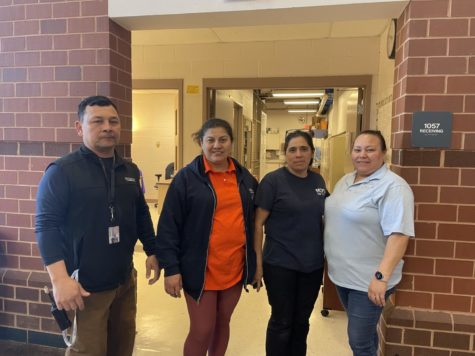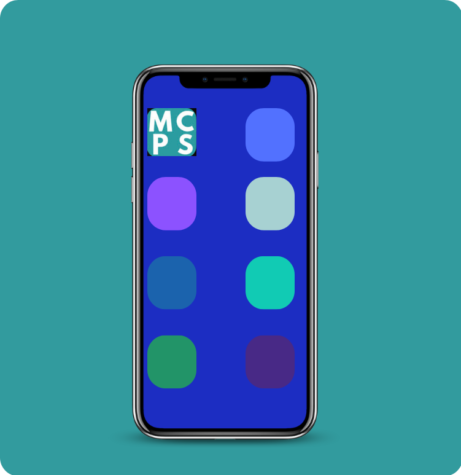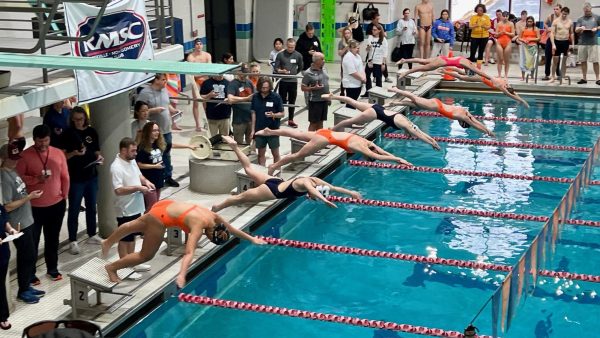La Importancia de Tomar Español para Hispanohablantes
English Version Below
Para graduarse de escuela de bachillerato en MCPS, los estudiantes tienen que tomar un curso de idiomas por dos años. RHS ofrece idiomas como el español, francés y el lenguaje de signos americano. Junto con clases de español normales, RHS ofrece Español para Hispanohablantes.
Con hasta 3 niveles, Español para Hispanohablantes (SSS) tiene cursos donde los hispanohablantes nativos y de herencia pueden mejorar sus habilidades de lectura, escritura y comunicación. Los “hablantes nativos” nacieron en países hispanohablantes, y “hablantes de herencia” nacieron en los EE.UU. pero hablan español en casa. Si tú eres uno de estos hablantes, ¡considera tomar SSS!
Tres maestras enseñan cursos de SSS: Dulce Carrillo, Silvia Juarez, y Maritza Vakas. Las maestras con frecuencia enseñan en español en vez de cursos de español típicos que hablan más inglés. Muchos hablantes ya hablan español en casa o escuchan a sus padres hablar español, entonces las actividades son más avanzadas y se enfocan en mejorar las habilidades de lectura.
La escuela secundaria típicamente es el primer año donde los estudiantes están en un ambiente formal de español. Los estudiantes aprenden cómo aplicar sus habilidades de pensamiento crítico haciendo más trabajo que eventualmente los ayuda a pasar el examen de AP o IB si ellos escogen tomarlo, o conseguir el sello de alfabetización bilingüe de Maryland. Las actividades en SSS están basadas en cuatro áreas: escuchando, hablando, escribiendo y leyendo. Estas actividades preparan a los estudiantes a mejorar sus habilidades con juegos de vocabulario y escribiendo párrafos completos, todo de una manera interactiva con temas interesantes. Las actividades siempre están relacionadas con todo tipos de países latinoamericanos.
Los cursos de SSS no solo se enfocan en mejorar sus habilidades lingüísticas. Hay bastantes aspectos culturales en los cursos. Los estudiantes pueden aprender cosas sobre diferentes países latinoamericanos, como la variedad de comida, vestimenta tradicional y acentos no solo del contenido de la clase sino también de sus compañeros.
Todos los estudiantes tienen orígenes y habilidades diferentes cuando toman cursos de SSS. Algunos estudiantes comienzan a aprender cómo escribir oraciones completas, mientras que otros pueden ir un poco más y escribir párrafos. La clase de SSS les ayuda a perfeccionar sus habilidades que los estudiantes ya tienen y toma pasos para que los estudiantes mejoren. Tener la oportunidad de mostrar su crecimiento y tener esas tareas flexibles es importante.
Juarez le dijo a La Comunidad Carnero que estas clases son específicamente “orientadas a sus necesidades para mejorar el nivel de español que [los estudiantes] conocen.” Cuando ella tenía 16, no tenía la oportunidad de tomar estos tipos de clases. “Me habría encantado tener una clase así que me ayudara en mi propio idioma para mejorar habilidades de lectura que son transferibles en otras materias.”
En general, Español para Hispanohablantes trae un sentido de comunidad a los estudiantes que lo toman. Con diferentes orígenes culturales, los estudiantes aprenden cosas nuevas sobre otros países latinoamericanos y de ellos mismos.
La Sra. Carrillo dice que ella ama a sus estudiantes hispanohablantes. “Es como verme a mí misma en la clase otra vez. No solo es sobre la parte académica, es más como una familia. Ellos se convierten en familia, siempre vienen durante el almuerzo. Es un lugar seguro donde ellos pueden hablar sobre nuestras luchas como una comunidad latina.”
Es agradable tener personas con las cuales relacionarse y juntos explorar nuestras culturas. Un maestro que hace chistes, ríe y es sarcástico es parte de la experiencia.
Ser bilingüe tiene sus ventajas para trabajos futuros y comunicarse con familiares o en otros países. ¡Entonces considera tomar Español para Hispanohablantes! Si tienes dudas o preguntas, habla con Dulce Carrillo, Silvia Juarez, o Maritza Vakas. Nunca es tarde para inscribirse, aunque tú ya tienes las credenciales requeridas de idioma para graduarte. ¡La comunidad hispana siempre te recibirá con los brazos abiertos!
_______________
To graduate high school in MCPS, students need to take a language course for two years. RHS offers languages like Spanish, French, and American Sign Language. Along with normal Spanish classes, RHS offers Spanish for Spanish Speakers.
With up to 3 levels, Spanish for Spanish Speakers (SSS) has courses where native and heritage Spanish speakers can improve their literacy, writing, and speaking skills. Native speakers are born in Spanish-speaking countries, and heritage speakers are born in the U.S. but speak Spanish at home. If you are one of these speakers, consider taking SSS!
Three teachers teach SSS courses: Dulce Carrillo, Silvia Juarez, and Maritza Vakas. The teachers often teach in Spanish rather than in typical Spanish classes that speak more English. Many speakers already speak Spanish at home or listen to their parents speak Spanish, so the activities are more advanced and focus on improving literacy skills.
High school typically is the first year where students are in a formal Spanish environment. Students learn how to expand their critical thinking skills by doing more work that eventually helps them pass the AP or IB exam if they choose to take it, or get the Maryland biliteracy seal. Activities in SSS are based on four areas: listening, speaking, writing, and reading. These activities prepare students to learn their best in those skills with vocabulary games and writing complete paragraphs, all in an interactive manner with interesting topics. The activities are always related to all kinds of Latin American countries.
SSS courses don’t just focus on enhancing linguistic skills. There are lots of cultural aspects to the courses. Students can learn things about different Latin American countries, like the variety of food, traditional clothing, and accents not just from the class content but also from their peers.
All the students have different backgrounds and skills when they take SSS courses. Some students begin to learn how to write complete sentences, while others can go further and write paragraphs. SSS perfects skills that students already have and takes steps for students to improve. Having the opportunity for students to show their growth and having those flexible assignments is important.
Juarez told La Comunidad Carnero that these classes are specifically “geared to [the students’] needs so the level of Spanish they already know is improved.” When she was 16, she didn’t have the opportunity to take these kinds of classes. “I would have loved to have a class that would help me in my own language to improve literacy skills that are transferable in other subjects.”
Overall, Spanish for Spanish Speakers brings a sense of community to the students who take it. With different cultural backgrounds, students learn new things about other Latin American countries and themselves.
Carrillo says she loves her Spanish-speaking students. “It’s like seeing myself in the classroom again. It’s not just about the academic part, it’s more of a family. They become like family, always coming during lunch. It’s a safe space where they can talk about our struggle as a Latino community.”
It’s nice having people with which to relate to and together explore our cultures. A teacher who makes jokes, laughs, and is sarcastic is part of the experience.
Being bilingual has its advantages for future jobs and communicating with family members or in other countries. So consider taking Spanish for Spanish Speakers! If you have doubts or questions, talk with Dulce Carrillo, Silvia Juarez, or Maritza Vakas. It’s never too late to enroll, even if you already have the required language credits to graduate. The Hispanic community will welcome you with open arms!
Leslie Herrera-Cruz is a junior and the bilingual writer for the Spanish Language column. This is her first year being a part of the Rampage. She enjoys...










